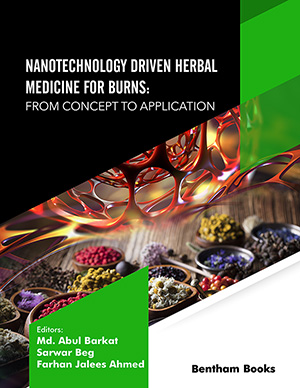Abstract
Skin burn injury is a prominent unintended injury that results in lifelong
physical and mental scarring, causing pain and subsequent mortality. Notwithstanding
a considerable decrease in their incidence, burn injuries remain as one of the most
common forms of trauma and also account for affecting the mental health, quality of
life all around the globe. Burn injuries can be managed using chemotherapeutic
modalities and have always been the domain of burn consultants. According to the
WHO (world health organization), approximately 1,80,000 deaths occur every year that
are caused by burns, and the vast majority occur in countries with low and middleincome.
This incidence is higher due to illiteracy, poverty, and lack of safety
awareness. Despite the availability of numerous therapeutic moieties and ointments
available commercially, people are more converging on the herbals remedies due to
their holistic approach and less toxic effects. In this book chapter, we are focusing on
the novel Herbal Informatic model for the identification of ethnopharmacologically
based predominant phytoconstituents or Nano-phytomedicines (NPs) for the
management of skin burn injury. This model was pre-validated by Tanwar et al., on
several disease models such as Autoimmune disorders like Rheumatoid Arthritis (RA),
Gout; Metabolic disorders like Diabetes, and several Nosocomial infections such as
Salmonella, E. coli, Clostridium species, etc. This novel tool involves the rationalebased
selection of herbals that could be an integrated ‘Herbal Informatics’ approach employing the use of both ethnopharmacological/traditional knowledge from the
Ayurvedic Medicinal System (AMS) and in silico bio-informatics search tools. This
combinatorial approach serves to retrieve information about a plant and reveals their
phytoconstituents based on medicinal properties for targeting virulence
factors/biomarkers involved in the progression of burn injury. In this chapter, we are
emphasizing the 5-major steps that are involved in scrutinizing the robust druggable
natural compounds that could be utilized to develop Nano-phytomedicines (NPs) for
the management of skin burn injury or burn sepsis and can also be effective in the drug
discovery process followed by study at in vitro and in vivo level.
Keywords: Ayurvedic Medicinal System, Burn Injury, Ethnopharmacological Knowledge, Ethnopharmacological, Herbal Informatics, Nano-phytomedicines, Skin Injury, WHO.






















